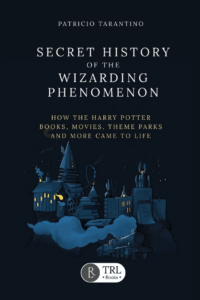Once any field of interest becomes sufficiently detailed, terminology needs to be defined in order to communicate effectively. The same goes for the Harry Potter books. It might seem absurd, but when you start to consider that there are dozens and dozens of translations, hundreds of different editions in countries all around the world—times seven—it helps to be precise about what you’re talking about.
Language: ‘Language’ might seem it could go without definition, but in actual fact what constitutes a ‘language’ is so complicated that we aren’t even going to attempt to define it here. For our purposes we are going to punt the entire question over to SIL International which maintains the ISO 639-3 standard for language codes and names. But consider a couple of examples:
- ‘Chinese’: multiple mutually unintelligible languages united by a common writing system the speakers can all read.
- ‘Serbo-Croation’: the same mutually intelligible language divided by two writing systems and the complex politics of the region.
‘Language’ is something we take for granted and it is way more complicated than most people suspect.
Translation: Translation is possibly the most misused word when discussing the different language editions of Harry Potter because, well, it’s complicated. Or at least, other-language editions are complicated—’translation’ isn’t. It’s just that the books that aren’t translations (or different translations) are complicated and we don’t have better terminology to use. For our purposes here this is the formula for a translation:
original English text + target language + a native speaker > target language text
ex. HP and PS + Spanish + Alicia Dellepiane Rawson > HP y la piedra filosofal
This is perhaps most useful when trying to determine whether two editions in the same language are different translations.
While it is possible for the same translator to do more than one translation of the same text (cf. Le Ton Beau de Marot for an extreme example) or for the same translator to translate the same text into more than one other language, that doesn’t really happen in this context. The translator is the critical factor: same translator, same translation; different translator, different translation. Unambiguous and easy to decide.
‘English’ is a bit of a pain. The English editions of the books are not translations, obviously, since they are the originals. However, in many contexts we want the term ‘translation’ to include the English because the discussion includes English as a ‘language edition’ of the books and we have no better term for ‘translations’ + the original English. This OK; we don’t need to get pedantic. The convention on Potterglot is: if it’s a technical context, English is not included. Example: answering the question “how many languages has HP been translated into?” But within more casual discussions, English will often be implicitly included under the blanket term of ‘translation’.
Official vs. Unauthorized Translations: This is a relatively simple definition. If the translator and/or publisher have properly obtained the rights from J. K. Rowling’s agents, the translation is ‘official’. If not, then it is unauthorized. Where it gets a little complicated is that there are a couple of cases in which an unauthorized translation has become an official translation. If the rights are withdrawn, we don’t consider it an unauthorized translation since the work was still licensed when it was published.
Adaptation: An example is the best way to illustrate this definition: Harry Potter and the Sorcerer’s Stone. This is the edition of the first book that was adapted for an American audience. British words like jumper (‘sweater’) were replaced with their American synonyms because American children are less likely to be familiar with those words with those meanings. There is sometimes sufficient regional variation within languages that it may make sense to adapt the text to the readers of that region.
Often, adaptations are mistakenly referred to as ‘translations’, but: the cardinal rule is same translator, same translation. ‘Adaptation’: well, the choice of ‘adaptation’ for this set of regional language editions of the books is somewhat arbitrary. Nonetheless, it’s the term that we use here and that we encourage everyone to use. ‘Translation’: not arbitrary or ambiguous at all.
Transliteration: There are few cases in which a text has be rendered in a different writing system. A good example: the English Braille edition. Because of the tight relationship between language and writing, we have a tendency to associate ‘different writing’ with ‘different language’. But, the cardinal rule again: same translator, same translation. (Or in this case, no translator, same language…). The proper term for changing the writing system is ‘transliteration’. And unlike ‘adaptation’ that’s not arbitrary.
Variant: Between editions, the text of any given translation (or the original! or an adaptation!) may vary for other reasons beside regional adaptations. Correction of typos, improvements in wording etc. ‘Variant’ is a catch-all for other editions with different texts.
Edition: A book may be reprinted with very minor changes, like correction of some typos; however if there are major revisions to the text (like a translation!), the addition of content (like an appendix or preface), changing the binding (hardcover vs. paperback) or a redesign of the book (new type setting, large print etc.) it is considered a new ‘edition’. A new cover design by itself does not constitute a new edition but, more often than not, corresponds with other changes that do constitute a new edition. Although not 100% true, there is usually a one-to-one correspondence between an edition and an ISBN number. In modern book publishing, any new edition requires a new ISBN.



